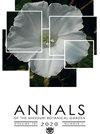Plant Conservation and the Sustainable Development Goals: A Policy Paper Prepared for the Global Partnership for Plant Conservation1
IF 1.1
3区 生物学
Q3 PLANT SCIENCES
引用次数: 20
Abstract
Abstract The Global Strategy for Plant Conservation (GSPC), with its 16 plant conservation targets, was originally adopted by the Parties to the Convention on Biological Diversity (CBD) in 2002. It was updated and revised in 2010, with targets set to be achieved by 2020. The GSPC's targets are output oriented, specific, and measurable. They address the conservation needs of wild plants as well as those of cultivated crops, pastures, and forests. Although it is generally acknowledged that greater progress has been made in conserving threatened plants than would have been made without the GSPC, there is a continued lack of mainstreaming plant conservation at the national level and a lack of comprehensive information on which plants are threatened and where. With the GSPC reaching the end of its second phase in 2020, it is important to consider how plant conservation can enhance its visibility and generate support in the future. The 2030 Sustainable Development Agenda and associated Sustainable Development Goals (SDGs) were developed to succeed the Millennium Development Goals and were adopted in 2015 by the international community through the United Nations. It is expected that the SDGs will shape the actions taken by governments in the future. This paper reviews and highlights the contribution that plant conservation can make in achieving the SDGs. The SDG framework provides a helpful point of reference to demonstrate the fundamental importance of plants for the planet, and importantly, if plant conservation is not achieved, then the achievement of these goals is put at risk, suggesting that the integration and mainstreaming of biodiversity conservation, ecological restoration of degraded ecosystems, and plant protection in particular, are of fundamental importance to the achievement of sustainability on the planet.植物保护与可持续发展目标:为植物保护全球伙伴关系准备的政策文件
摘要《全球植物保护战略》最初由《生物多样性公约》缔约方于2002年通过,共有16个植物保护目标。它在2010年进行了更新和修订,目标是到2020年实现。GSPC的目标是以产出为导向的、具体的和可衡量的。它们解决了野生植物以及栽培作物、牧场和森林的保护需求。尽管人们普遍承认,在保护受威胁的植物方面取得了比没有全球植物保护公约时更大的进展,但国家一级仍然缺乏将植物保护纳入主流的做法,也缺乏关于哪些植物受到威胁以及在哪里受到威胁的全面信息。随着GSPC在2020年进入第二阶段,重要的是要考虑植物保护如何提高其知名度并在未来获得支持。《2030年可持续发展议程》和相关的可持续发展目标是为实现千年发展目标而制定的,并于2015年由国际社会通过联合国通过。预计可持续发展目标将影响各国政府未来采取的行动。本文回顾并强调了植物保护对实现可持续发展目标的贡献。可持续发展目标框架为证明植物对地球的根本重要性提供了一个有用的参考点,重要的是,如果不能实现植物保护,那么这些目标的实现就面临风险,这表明生物多样性保护、退化生态系统的生态恢复,特别是植物保护的整合和主流化,对实现地球上的可持续性具有根本重要性。
本文章由计算机程序翻译,如有差异,请以英文原文为准。
求助全文
约1分钟内获得全文
求助全文
来源期刊
CiteScore
3.60
自引率
0.00%
发文量
15
期刊介绍:
The Annals of the Missouri Botanical Garden is a quarterly international journal primarily devoted to systematic botany and evolutionary biology. We encourage submissions of original papers dealing with significant advances in the taxonomy, phylogeny, biogeography, paleobiology, and evolution of plants, and in conservation genetics and biology, restoration ecology, and ethnobiology, using morphological and/or molecular characters, field observations, and/or database information. We also welcome reviews and papers on conceptual issues and new methodologies in systematics. Important floristic works will also be considered. Symposium proceedings discussing a broader range of topical biological subjects are also published, typically once a year. All manuscripts are peer-reviewed by qualified and independent reviewers.

 求助内容:
求助内容: 应助结果提醒方式:
应助结果提醒方式:


